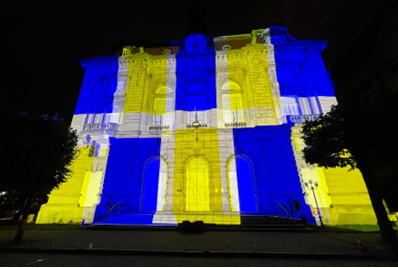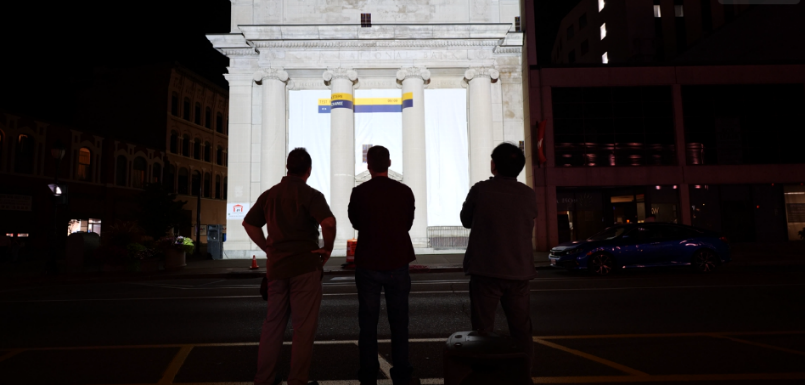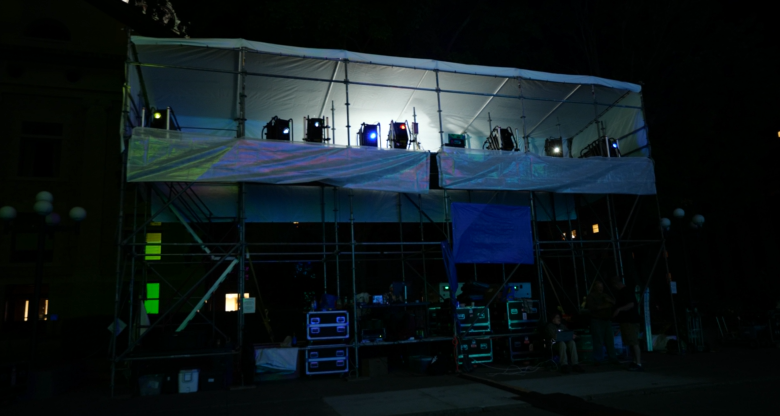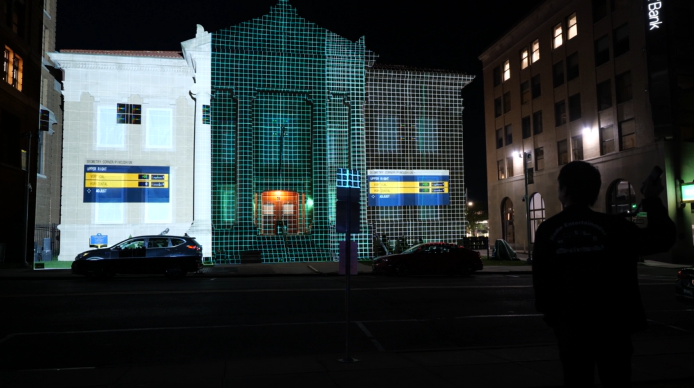November 13, 2024
4 min read
As LUMA’s official technology partner, Panasonic Connect plays a critical role in bringing these artistic visions to life, providing the cutting-edge hardware and engineering support that helps make the festival a success year after year. In this article, we will explore the technical elements behind projection mapping and how Panasonic Connect helps ensure each building becomes a perfect canvas for these artistic masterpieces.
Transforming Buildings into Canvases with Projection Mapping
For an outdoor festival of LUMA’s size to succeed, key technical elements of projection mapping must be met. High brightness, accurate color, contrast, flexible installation, and clarity ensure that the artist’s vision reaches the audience, even around obstacles such as trees and lamp posts. Without these qualities, the art may appear distorted, dim, or incomplete.
“We depend on Panasonic Connect’s projection technology to enhance the depth and detail of the artist’s work,” says Melissa Schmitz, lead technical director of LUMA. “It elevates the experience both for the artists, who want their work displayed properly, and the audience, who gets to enjoy it.”
Schmitz also relies on the technical know-how that Panasonic Connect’s engineering team brings to the partnership. “Their deep industry knowledge helps us improve as technology evolves, and I can always count on Panasonic to set everything up seamlessly, so that when it’s handed off to members of my technical team, we can do our best work.” The process of transforming Binghamton’s historic architecture into a projection-ready canvas is multi-faceted. It starts with careful planning and involves Panasonic Connect’s expertise at every step, ensuring seamless execution. Here’s how it works:
Step 1: Planning the Projection Mapping Layout
The layout plan begins with projector and lens configurations for each installation, as these elements inform all future decisions.
“No two buildings are the same,” explains Eric Adams, Sales Engineering Manager for Panasonic Connect. “Every building is approached as its own project that poses its own unique challenges.”
Factors such as trees, lamp posts, columns, and unique structures can impact proper placement, ensuring light hits the surface as needed. Schmitz notes that Panasonic Connect’s flexible installation options, like stacking cages, help simplify setup and adjustment. Avoiding obstacles and shadows, and positioning projectors above the audience, are also key considerations.
Step 2: Optimizing Coverage and Overlap
Once projectors are placed, optimizing coverage and overlap is next. Adams explains, “It’s crucial there’s enough overlap to create one large surface and ensure consistency across the image.”
Site technical directors ensure proper overlap where projectors intersect, creating a seamless, uniform image. However, sometimes, the light is lost off the edges of buildings that aren’t completely straight. Schmitz emphasizes, “It’s always better to have extra light to lose than not enough.” Without the right coverage and overlap, parts of the installation could appear incomplete.

Step 3: Geometry Correction
Geometry correction transforms the building into a flat canvas. “This step squares the images up to ensure uniformity, making sure the grids look consistent from every angle,” Adams explains. It requires precision and a highly trained eye, as even small errors can affect the final result.
This is where technical expertise becomes critical – Schmitz describes Panasonic Connect’s engineering support as “indispensable members of the team who perfect every detail.” The team carefully adjusts the grid around the cornices, columns, and other intricate details, ensuring that every projection aligns perfectly with the building’s unique architecture.
Step 4: Blending
Before uploading content, it’s crucial that light is uniform across the building. To achieve this, projectors are configured to overlap in certain areas, but this can result in double the light, making some spots brighter than others. Blending is used to solve this, ensuring consistent brightness across the entire image.
As Adams explains, “Blending ensures the amount of light that hits that area is consistent with the center of the image.” This is done by applying a gradient to both projectors, gradually adjusting from pure black to full brightness over the overlap. The process is mirrored on the other projector, creating a seamless transition. Once complete, the result is a single, cohesive display with uniform light.
 Step 5: Fit Projection Mapping Content to the Flat Canvas
Step 5: Fit Projection Mapping Content to the Flat Canvas
With the building now transformed into a flat canvas ready to be painted with light, the site technical directors fit the artist’s content using specialized software. They align the content precisely to match the projector configuration, ensuring that the overlapping areas create a seamless visual experience for the audience.
 Empowering Artists Through Technology and Teamwork
Empowering Artists Through Technology and Teamwork
The collaboration between LUMA and Panasonic Connect combines technical expertise with innovation to bring artists' visions to life. It’s a partnership that blends innovative technology with hands-on support, ensuring a seamless process from setup to execution.
“We count on Panasonic, and they really do go above and beyond to help us the whole way through,” Schmitz says. “It’s truly a team effort.”
To learn more about how Panasonic Connect projectors can enhance your event, visit https://connect.na.panasonic.com/av/projectors.
Get in touch at https://connect.na.panasonic.com/av/contact-us.
To stay in the know for all things LUMA, visit https://lumafestival.com or follow on Instagram at @lumafestival.


